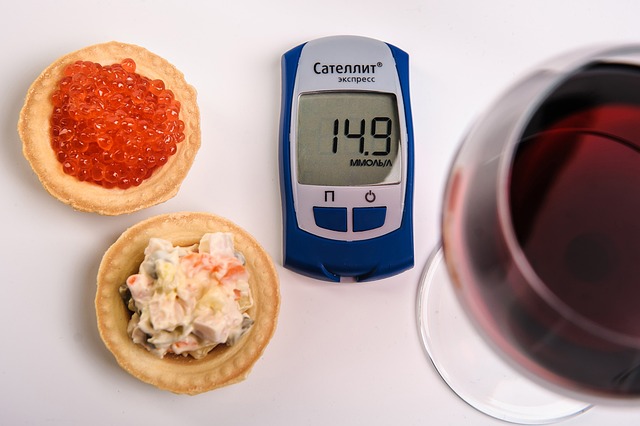Semaglutide, a cutting-edge glucagon-like peptide-1 (GLP-1) receptor agonist, offers a dual-action solution for type 2 diabetes management. It mimics natural GLP-1 effects to enhance insulin secretion in response to glucose levels and suppress glucagon release, leading to improved glycemic control without hypoglycemia. Additionally, semaglutide aids weight loss by increasing satiety, making it a preferred choice for patients seeking long-term health improvements. Clinical trials have confirmed its efficacy, resulting in global regulatory approvals. As a once-weekly injectable, it provides convenient dosing and enhances patient adherence. Potential side effects include nausea, vomiting, and diarrhea, while more severe complications are rare but should be monitored by healthcare professionals. Future research aims to optimize dosage, understand long-term effects, and explore semaglutide's role in preventing diabetic complications, with the ultimate goal of personalized treatment strategies for effective type 2 diabetes management.
The rising global prevalence of diabetes demands innovative treatments, making semaglutide a promising new option. This article delves into the multifaceted impact of semaglutide on blood sugar control, exploring its role as a semi-synthetic glucagon-like peptide-1 (GLP-1) receptor agonist. From understanding its mechanism of action to examining clinical trial results, we dissect how semaglutide helps regulate insulin and glucagon, offering benefits for both type 2 and type 1 diabetes patients. Additionally, we discuss its administration, potential side effects, and future research directions in the realm of diabetes treatment.
Understanding Semaglutide: A New Diabetes Treatment Option

Semaglutide, a novel diabetes treatment option, has emerged as a game-changer in blood sugar control. It’s a type of medication that mimics a natural hormone called GLP-1 (glucagon-like peptide-1), which helps regulate blood sugar levels by stimulating insulin release and inhibiting glucagon production. This dual action significantly improves glycemic control, making semaglutide an effective choice for managing type 2 diabetes.
As a long-acting injectable medication, semaglutide offers a once-weekly dosing regimen, simplifying the treatment process. Its benefits extend beyond blood sugar control; it can also aid in weight management by reducing appetite and promoting satiety, leading to potential improvements in overall health for individuals with diabetes.
How Semaglutide Helps in Blood Sugar Control

Semaglutide, a novel glucose-dependent insulinotropic polypeptide (GIP) receptor agonist, has emerged as a powerful tool in the management of type 2 diabetes. Its primary mechanism of action involves enhancing insulin secretion in a glucose-dependent manner, which helps to lower blood sugar levels. By imitating the effects of natural GIP, semaglutide stimulates insulin release from beta cells when blood glucose is high, promoting efficient glycemic control.
In addition to its insulinotropic properties, semaglutide also suppresses glucagon secretion, a hormone that raises blood sugar. This dual action results in a significant reduction in HbA1c levels, providing a substantial benefit for patients with diabetes. The medication’s ability to improve not just glucose control but also weight management has made it a preferred choice for many individuals seeking improved health outcomes and a better quality of life in the long term.
Mechanisms of Action: Semaglutide's Role in Regulating Insulin and Glucagon

Semaglutide, a novel glucagon-like peptide-1 (GLP-1) receptor agonist, has emerged as a powerful tool in the management of type 2 diabetes. Its impact on blood sugar control is primarily attributed to its dual mechanisms of action, which involve both insulin and glucagon regulation. By mimicking the effects of natural GLP-1, semaglutide stimulates insulin secretion from beta cells in a glucose-dependent manner, ensuring a balanced response based on blood sugar levels. This selective stimulation helps lower blood glucose without causing hypoglycemia.
Moreover, semaglutide inhibits glucagon release from alpha cells, which further contributes to improved glycemic control. This action suppresses excessive glucagon secretion, especially during periods of elevated blood sugar, thereby reducing liver glucose production and improving overall insulin sensitivity. The dual-action nature of semaglutide makes it a highly effective diabetes treatment option, offering both insulinotropic and glucagonostatic benefits for superior blood sugar management.
Clinical Trials: Evidence of Semaglutide's Efficacy in Type 2 Diabetes Management

Clinical trials have provided strong evidence for the efficacy and safety of semaglutide in managing type 2 diabetes. These studies have demonstrated that semaglutide, a glucagon-like peptide (GLP)-1 receptor agonist, significantly improves glycemic control compared to placebo or other standard antidiabetic medications. In multiple randomized controlled trials, semaglutide has shown substantial reductions in HbA1c levels, the gold standard measure of long-term blood sugar control.
The trials have also highlighted semaglutide’s potential for weight loss, a beneficial side effect that can further enhance its utility as a diabetes treatment. This dual action—controlling blood sugar and aiding weight management—makes semaglutide an attractive option in the arsenal against type 2 diabetes. Furthermore, these clinical results have led to regulatory approvals worldwide, solidifying semaglutide’s position as an effective and safe diabetes treatment for many patients.
Benefits of Semaglutide for Patients with Type 1 Diabetes

Semaglutide, a novel glucagon-like peptide-1 (GLP-1) receptor agonist, has emerged as a game-changer in the diabetes treatment landscape, particularly for patients with type 1 diabetes (T1D). Its primary mode of action involves mimicking the effects of natural GLP-1, leading to improved blood sugar control. One of the key benefits is its ability to stimulate insulin secretion in a glucose-dependent manner, helping to lower blood sugars without causing hypoglycemia. This is especially advantageous for T1D patients who require careful management to prevent both hyperglycemia and episodes of low blood sugar.
Additionally, semaglutide promotes weight loss by increasing feelings of fullness and reducing appetite, making it a valuable tool in combating the high-calorie dietary needs often associated with diabetes management. As a once-weekly injection, it offers convenience and improves patient adherence to treatment regimens compared to more frequent insulin administrations. This simplicity could significantly enhance the quality of life for individuals living with T1D.
Potential Side Effects and Safety Considerations

Semaglutide, while highly effective in blood sugar control for people with type 2 diabetes, is not without potential side effects. Common adverse reactions include nausea, vomiting, and diarrhea, which may be more pronounced during the initial weeks of treatment. These gastrointestinal symptoms often subside as the body adjusts to the medication. More severe but less frequent side effects may include pancreatitis, kidney problems, or gallstones. It’s crucial for patients to be aware of these risks and report any concerning symptoms to their healthcare provider promptly.
Safety considerations extend beyond individual reactions. Semaglutide should be used with caution in individuals with a history of pancreatitis, kidney disease, or certain gastrointestinal disorders. Regular monitoring of blood sugar levels, kidney function, and liver enzymes is recommended during treatment. Additionally, patients on semaglutide therapy should maintain a balanced diet and regular exercise routine to optimize glycemic control and minimize potential adverse effects.
Semaglutide Administration: Injectable Form and Dosing Guidelines

Semaglutide, a groundbreaking medication in the management of type 2 diabetes, is administered via injection, offering a precise and controlled approach to blood sugar regulation. This injectable form eliminates the need for oral intake, making it a convenient option for patients. The dosage of semaglutide is typically determined by a healthcare professional based on individual patient needs and response to treatment. Guidelines recommend starting with a lower dose, which can then be adjusted up or down as necessary to achieve optimal blood sugar control while minimising potential side effects.
The dosing regimen often involves once-weekly injections, providing patients with a consistent and reliable way to manage their diabetes. This administration method allows for better absorption and a more sustained effect compared to some other forms of medication. As with any treatment, adherence to the prescribed dosing schedule is crucial for ensuring maximum efficacy in controlling blood sugar levels.
Future Prospects and Research Directions for Semaglutide in Diabetes Treatment

The future prospects and research directions for semaglutide in diabetes treatment are promising, as scientists continue to explore its potential benefits. Ongoing studies focus on optimizing dosage regimens and understanding long-term effects, aiming to enhance patient outcomes and quality of life. Additionally, researchers are investigating semaglutide’s role in preventing diabetic complications, such as cardiovascular diseases and kidney damage.
These future directions also include evaluating semaglutide’s efficacy in diverse patient populations, including the elderly and those with comorbid conditions. Furthermore, combining semaglutide with other diabetes medications or lifestyle interventions could lead to more comprehensive and personalized treatment strategies for managing blood sugar levels in patients with type 2 diabetes.
